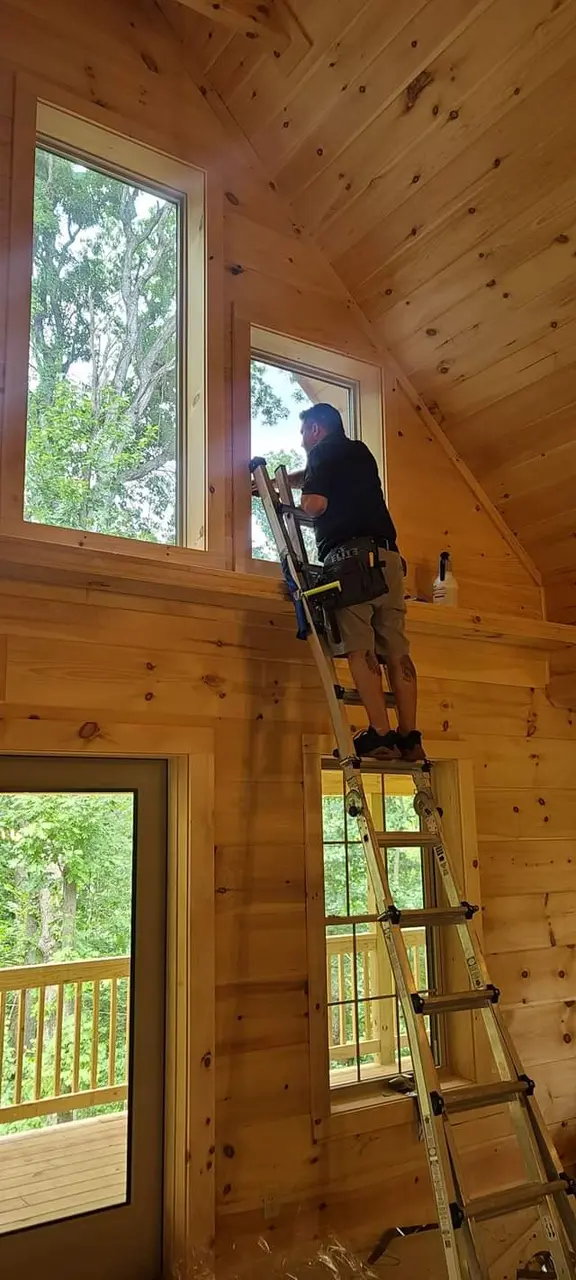Introduction to Home Window Tinting
Home window tinting isn’t just about your car looking cool. It’s a game-changer for your home too. Think less glare, more privacy, and even saving money. Yes, you heard that right. Putting a tint on your home windows can cut down on the sunlight blazing into your living room, making it easier to see your TV screen and protect your furniture from fading. It also steps up your privacy game – no more nosy neighbors peeking in. And here’s the kicker: it can help lower your energy bills because your air conditioner won’t have to work overtime. So, when you’re considering giving your home a little upgrade, don’t overlook the power of window tinting. It’s practical, saves you cash in the long run, and gives your home that sleek look.
The Impact of Window Tinting on Indoor Comfort
Window tinting does more than just make your home look sleek. It plays a big role in how comfy your house feels. First off, it cuts down on the glare from the sun. This means no more squinting during your TV time or when you’re trying to work on your computer. Big win, right? Next up, it helps control the temperature. By blocking some of the sun’s heat, your rooms stay cooler in the summer. No need to crank up the AC all the time, so you save on energy bills. But it’s not just about staying cool. In winter, some tints help retain warmth, keeping you snug without maxing out the heater. Last but not least, it protects your stuff. Sunlight can make your furniture, carpets, and art fade over time. Tinting cuts down on this exposure, so your interior looks better for longer. To sum up, window tinting is a game-changer for indoor comfort, making your home a more pleasant place all year round.
Enhancing Privacy with Home Window Tinting
Home window tinting is a solid move for boosting your privacy. Think about it—you get to shield your indoor space from outside eyes. This means whether you’re binge-watching in your living room or dancing like no one’s watching, you do so without the neighbor’s prying eyes. Window tints come in varying shades and opacities, letting you choose how much you want to keep to yourself. The best part? From the outside, it’s tough for anyone to see in, but you’ll still have a clear view of the world outside your window. Plus, this privacy upgrade doesn’t just mean you’re hidden from nosy neighbors, but it also adds a layer of security. Fewer chances for potential burglars to window-shop your belongings. So, with a simple addition of window tint, you up your home’s privacy game significantly—making your home your true sanctuary.
Types of Window Tints Available for Homes
When it comes to making your home more comfortable and private, window tinting is a game-changer. There are a few main types of tints you can choose from, each with its own benefits. Solar control tint are great for reducing glare and heat, making your home cooler and reducing the need for air conditioning. Then there’s decorative tint, which come in different patterns and colors, adding style while also providing privacy. Security tint make your windows tougher to break, adding a layer of safety. Lastly, there are privacy tint which are perfect if you want to stop people from peeking into your home without blocking your view outside. Each type has its special way of making your home more enjoyable, so think about what’s most important for you when deciding.
UV Protection and Home Window Tinting
Window tinting isn’t just for cars; it’s a game-changer for homes too. One of the biggest wins of adding tint to your home windows is blocking out harmful UV rays. Think about it like this: those sunny spots in your house that feel like a mini-vacation could actually be fading your furniture and even harming your skin. With tinted windows, up to 99% of these UV rays can’t get through. This means your furniture, floors, and art stay the color they were meant to be, and you reduce the risk of skin issues from UV exposure inside your own home. Plus, this extra layer on your windows isn’t just a one-trick pony. While it’s keeping those UV rays at bay, it’s also helping keep your indoor temperature more consistent. So, you’re not just protected; you’re comfortable. And, when summer hits with its scorching sun, you’ll notice your rooms stay cooler without cranking the AC. It’s all about making your home a safer and more comfortable place, all while cutting down on energy costs. Tinting your home windows for UV protection is a smart move, hands down.
Energy Efficiency and Cost Savings
Tinting your home windows is more than just about looks; it’s a smart way to save money and energy. Here’s how: tinted windows reduce the heat that enters your home, meaning your air conditioning doesn’t have to work as hard. This can lead to a noticeable drop in your cooling costs, especially during those scorching summer months. We’re talking about potentially shaving off a good chunk from your energy bills. Plus, in the winter, some types of window tints can actually help retain heat inside, further cutting down your heating expenses. It’s like giving your home a pair of sunglasses — it keeps things cool and comfortable without using extra energy. So, while there’s an upfront cost to window tinting, the savings on your energy bills over time make it a wise move for your wallet and the environment.
Aesthetic Benefits of Tinting Your Home Windows
Tinting your home windows does more than just look good; it brings a sleek finish to your home’s appearance. Think of it like adding a pair of stylish sunglasses to your home. It’s not just about the vibes; it’s about making a statement. Tinted windows can match or complement your home’s design, making your space feel more cohesive and put-together. Beyond the cool factor, tinted windows also keep things private. You get to enjoy your home as your personal haven without worrying about prying eyes. It’s a win-win; your home stays looking sharp while you chill in peace. So, when thinking about giving your home a little facelift, remember that window tinting is like the secret sauce. It turns “just okay” into “wow” without breaking the bank.
How to Choose the Right Window Tint for Your Home
Choosing the right window tint for your home is simpler than you think. First off, consider why you want tint in the first place. Is it to keep the sun’s glare out, boost privacy, or maybe lower energy bills? Once you know why, here are a few things to think about: Type of tint. Some tints are great for privacy and letting light in, while others are top-notch at blocking UV rays. Color. Tints come in colors from clear to dark, flashy to subtle. Pick one that matches your home’s style. Tech features. Some tints have tech that can actually lower your energy bills by keeping heat in or out, depending on what you need. Local regulations. Some places have rules on how dark your tint can be. Check this out before you buy. Also, remember that not all tints are created equal. Better quality usually means higher price, but also a longer lifespan. So, think about not just what you need now, but what will still be good for you and your home down the road. And if in doubt, chat with a pro. They can help guide you to the best choice for your space.
Installation Process for Home Window Tinting
Installing home window tints is not as complicated as it might seem, but it does require precision. First, you need to clean your windows thoroughly. Any dust or dirt can cause bubbles under the tint, ruining the look and effectiveness. Then, the window film is carefully measured and cut to perfectly fit each window. It’s a bit like measuring fabric for a custom suit; accuracy is crucial. Once cut, the film is applied to the window. This step involves removing the backing from the film, applying it to the glass, and then using a squeegee to smooth out any bubbles or wrinkles. It’s important that this is done carefully to ensure the film adheres well without any creases. Finally, the edges are trimmed for a clean look, and the tint is left to cure. Curing time can vary, but it usually takes a few days for the film to fully adhere and for any remaining bubbles to disappear. Doing it yourself is possible, but getting a professional ensures it’s done right the first time. Plus, they can advise on the best type of tint for your needs, whether it’s to reduce glare, increase privacy, or improve energy efficiency.
Maintenance Tips for Your Tinted Windows
Taking care of tinted windows is simpler than you might think, but it’s crucial to do it right to maintain their lifespan and effectiveness. First off, always wait a couple of days after installation before you clean them for the first time. This gives the film adequate time to cure. When you’re ready to clean, use a soft cloth or a sponge along with a mild, ammonia-free cleaner. Harsh chemicals can damage the tint, so it’s better to stick with water or a cleaner designed for tinted windows. Also, avoid using abrasive tools like scouring pads that can scratch the film.
To dry your windows, use a rubber squeegee or a soft, dry cloth. This helps avoid water spots and streaks. It’s worth cleaning your tinted windows regularly to prevent dust and dirt buildup, which can also scratch the film over time.
Remember, the edges of the window tint are the most vulnerable, so be gentle around those areas to prevent peeling. If you do notice any peeling or bubbling, it’s crucial to address it promptly. Ignoring it can lead to further damage, making it harder to fix.
Following these simple maintenance tips can significantly extend the life of your window tints, keeping your home comfortable and private for years to come.









